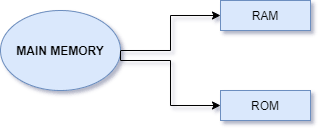In this series of blogs, we will study all the database management ( DBMS ) topics for interview purposes. this blog gives you only the insights and working explanation of each topic, we will not go in-depth of the topic
In the previous blog, we studied about Data structures and DBMS. So, now move on #2 topic
2) Difference Between Database and Database Management System?
Database :
Database is a collection of well-organized data. In the database, data is stored in the form of tables and views, and these sets of data elements designed to store and manipulate data in the future.
-
Two type of Database
-
Online transaction processing (OLTP)
stores current data & used for transaction purpose ( stored in megabyte or gigabyte)
-
Online analysis processing (OLAP)
stores historical data & used for analysis purpose ( stored in terabyte or petabyte )
-
In a relational database, the structure of the table also known as schema
DBMS:
DBMS is system software that is used to creating, managing, and retrieving data from the database as per the user requirement. it acts as an intermediator between user and database
for more information about DBMS you can read the previous blog :
Link :
DBMS ( FOR INTERVIEW PURPOSES)
Examples of DBMS are MySQL, Oracle, PostgreSQL, etc.
Let's understand difference via example
Excel is a database which can store your data but to extract the data you have to dig row by row manually
similar to excel we have an oracle, MySQL that offers commands by which users can fetch any data as per the requirements.
MAIN MEMORY VS SECONDARY MEMORY
- Main memory is the primary memory or internal memory of the computer while secondary memory is the backup or auxiliary memory of the computer.
- Types of Main memory & Secondary memory
- Main memory is directly accessed by the processing unit whereas secondary memory cannot be.
- Main memory is both volatile & non-volatile whereas secondary memory is always non-volatile.
- Main memory holds the currently using data while secondary memory stores the substantial amount of data & information ( from 256gb to 1 terabyte )
- Main Memory can be accessed by data buses while secondary memory is accessed by I/O channels
Thank you for reading : )




Top comments (0)